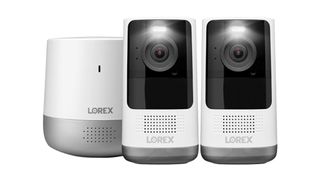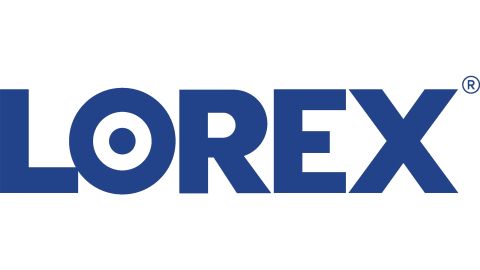IT Pro Verdict
Lorex earns its above-average price points with commercial-grade security systems of unbeatable quality.
Pros
- +
High-quality, professional-grade surveillance
- +
Customization of monitoring, storage, and playback
Cons
- -
Overwhelming product range with technical jargon
- -
Lack of installation and professional monitoring support options
Surveillance products offer you peace of mind and control over what’s occurring at your residence or commercial property. The best security systems don’t just deter potential trespassers; they can also trigger emergency responses or store footage that can be used in a dispute.
In this Lorex review, we detail the main things you should know if you’re considering this provider: its prices, features, performance, support and security, and how it compares to the competition. Navigating security specs if you’re not an expert can be tricky, so we’ll lay it out in simple, easy-to-digest terms.
Lorex: Pricing
Lorex has a one-off product fee, with no additional monthly costs, which sets it apart from competitors, such as Arlo, that charge monthly storage fees on top of device costs.
Lorex prices vary according to equipment complexity and camera bundle size. The cheapest security products from Lorex tend to be IP, or digital, camera systems, starting at around $229.99 on the Lorex website and including 4K video footage, nocturnal vision, and listen-in audio. For bundles of eight cameras and more, prices can climb to four digits: for example, an analog system with 16 outdoor cameras, recording 4K with audio and nocturnal vision, is priced at $1,249.99.
All surveillance equipment, apart from Wi-Fi cameras, comes with a recording device that stores your footage, but you can also purchase unlimited cloud storage from Lorex at $3.49 a month or $34.99 a year. Lorex products are also available via distributors like Amazon and Bestbuy, which may sell at cheaper prices.
Lorex: Features

The Lorex product range is feature-rich and can seem intimidatingly vast. To keep things simple, look out for the four main categories:
- IP digital cameras, which encode videos and store them on Network Video Recorders (NVRs)
- MPX analog cameras, which send videos to Digital Video Recorders (DVRs) for encoding and storage
- Wi-Fi cameras, which send videos to a microSD via Wi-Fi
- Wire-free cameras, which are battery-powered but still need to connect to a DVR for storage
You should choose your security system based on the characteristics of your property and how you intend to use the devices and footage.
If you need flexibility in positioning your cameras, wire-free ones are the handiest, but you won’t get 24/7 monitoring due to battery drain. Digital IP cameras are best suited for the high-traffic areas of large properties due to the versatility of the NVR. Meanwhile, MPX analog cameras work best in smaller properties such as urban venues and homes.
Most Lorex cameras have 4K video recording capabilities across both analog and digital cameras. This, coupled with the Pan-Tilt-Zoom, or PTZ, technology means you get to record in ultra-HD from any angle and zoom in and out.
Lorex cameras also come equipped with video motion detection, or VMD, which can be customised to react to significant changes in motion, as opposed to, for instance, a cat playing in the garden. High dynamic range (HDR) technology is an added plus, maintaining footage integrity in high-contrast environments. Most Lorex cameras are also night-vision ready.
All Lorex cameras, apart from Wi-Fi ones, need a recorder, either DVR or NVR, to store footage. Lorex includes from 1TB to 8TB with your DVR or NVR storage, depending on the number of cameras in the surveillance system.
You also get two days’ worth of footage stored in the cloud – up to 10GB – which you can watch live or play back via phone app, TV, and other devices such as tablets. A paid premium cloud plan, which stores your videos for 30 days, would provide unlimited storage.
Lorex: Performance

The setup of Lorex security systems is completely DIY. Normally, getting your system to start working is as easy as plugging your cameras into a power source and connecting them to a DVR or NVR via cable.
Then, there’s the setup of your recording settings via the Lorex Home app, including video resolution, motion detection sensitivity, face and vehicle recognition, and pan-tilt-zoom camera movements—all of which can help save space on your local storage. The app is also your main way of watching, replaying, and backing up important videos.
You can customise your setting to receive push notifications only if something significant happens. One downside of Lorex products is that they don’t offer a direct connection to public services like police or firefighters, so the DIY extends to calling local authorities yourself if things go wrong.
Lorex: Support
Lorex has technical and sales support staff available by phone Monday–Saturday, 10:00 am–9:00 pm EST, with options for English, Spanish, and French. Our experience with support showed sound product knowledge and virtually no call waiting time, but involved inefficiently long caller information gathering.
You can also contact support by email or read through an extensive product-specific knowledge base.
Lorex: Security
All Lorex security footage gets stored locally, on DVR, NVR, or microSD, which provides extra security. Additionally, the cloud-stored videos accessible on the Lorex Home app are secured via password, fingerprint, and two-step verification. You can also control your Lorex app using smart assistants, including Amazon Echo and Google Assistant, which can be programmed to recognise your voice.
In terms of property security, Lorex cameras can be set up to release light and siren signals when triggered by suspicious motion, but it’s up to you to contact relevant local authorities for support.
Alternatives to Lorex
Ring, now owned by Amazon, makes its security products easier to understand and choose from, though it has a much smaller range compared to Lorex. Ring products are cheaper overall and come with a monthly cloud storage fee of $3 or over. For example, its wire-free camera with 1080p HD sells for $99.99—but that’s because features like pan-tilt-zoom, 4K recording, and an always-charging camera are lacking. Ring would suit residential customers who are happy to pay a lower price for a more basic product.
Swann, on the other hand, is on a comparable price point to Lorex. Its product range is still not as vast, but offers variations across digital IP and MPX analog systems, with video quality up to 4K HD, and special features such as facial recognition. You may want to go with Swann if you need a professional monitoring plan to go with your camera—priced at $19.99/month—or if you want affordable one-camera systems for under $100.
Lorex: Final verdict
Lorex is a noteworthy option if you’re thinking of leveling up security at your residential or commercial property. Its impressive range of professional-grade camera technologies, added to the ease of installing, storing, and playing back footage justify the higher-than-average price points.
Though there’s little support during setup and emergency detection, the high reliability of its 4K HD products with night vision and facial recognition technology does set the mind at rest. Lorex additionally doesn’t lock you into a monthly cloud storage fee, which is a competitive edge.
Check out our guide to the best security systems.
Ioana holds a BSc in Business Management from King's College London, and has worked for over four years as a management consultant in the industries of technology, media and telecoms. Ioana is also a successful entrepreneur, having launched several social enterprises. Writing interests include market research and planning, start-up culture and ethics, agile methodology, and financial modelling. No stranger to tech and hackathons, she is also an accomplished fintech and SaaS writer.


